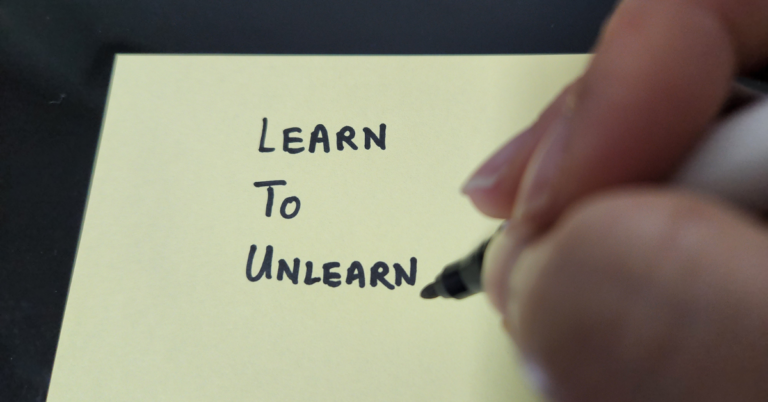In today’s hyper-accelerated professional world, the most significant barrier to advancement is not acquiring new skills, but holding on to outdated methods. Professionals who embrace the unlearning mindset career growth strategy actively shed obsolete habits, making room for new, essential skills. This approach allows you to evolve, secure promotions, expand your influence, and navigate complex career landscapes with agility.
Understanding the Foundations of Career Growth
Career growth is less about accumulation and more about adaptability. The Unlearning Mindset is the cognitive shift that enables effective adaptation and continuous improvement.
The Barrier of Learned Helplessness and Past Success
Old successes can create mental traps:
-
Cognitive Fixity: Overreliance on old solutions (e.g., spreadsheets instead of AI-driven analytics).
-
Confirmation Bias: Seeking information that supports past methods while ignoring new, better approaches.
Acknowledging that former “best practices” may now be outdated is essential. True growth begins when you are willing to dismantle old professional identities to build stronger ones.
Strategic Skill Enhancement Through Unlearning
Skill enhancement requires a phase of deliberate skill depletion. This creates mental space to adopt new, high-value capabilities.
-
Identify Obsolescence: Audit tasks that can now be automated or are inefficient.
-
Beginner’s Mindset: Approach new skills with humility and curiosity, whether it’s mastering a new software tool or soft skill like cross-functional leadership.
External resources like Harvard Business Review on Career Resilience provide frameworks for identifying outdated skills and fostering growth.
5 Key Strategies to Accelerate Career Growth
1. Master Strategic Visibility
-
Unlearn: Time-based metrics (long hours, constant presence).
-
Learn: Impact-focused metrics (Efficiency, Revenue Impact, Risk Mitigation).
2. Become a T-Shaped Professional
-
Unlearn: Siloed specialization.
-
Learn: Cross-functional fluency by understanding adjacent departments’ KPIs.
3. Embrace High-Impact Side Projects
-
Unlearn: Rigid adherence to a single project methodology.
-
Learn: Project agnosticism, adopting new workflows or technologies.
4. Seek and Act on Feedback
-
Unlearn: Defensive reflexes when receiving critique.
-
Learn: Process-based improvement, addressing habits weekly and demonstrating change.
5. Prioritize Work-Life Balance
-
Unlearn: The expectation of 24/7 availability.
-
Learn: Strategic boundaries such as Deep Work blocks and defined communication hours.
Talking to Your Manager About Promotions
Preparation: Build a promotion dossier showing unlearning in action.
-
Target Role: Specify the role you aim for.
-
Achievements: Quantify measurable impact.
-
Unlearning Narrative: Highlight retired habits and new skills applied.
Communication: Focus on future competencies, using unlearning language to frame past weaknesses as growth opportunities.
Building a Professional Network
Quality Over Quantity
-
Unlearn: Transactional outreach.
-
Learn: Value-first engagement by sharing insights or connecting others strategically.
Cognitive Empathy
-
Unlearn: Self-centric networking.
-
Learn: Actively listen to understand others’ challenges and offer tailored solutions.
Finding Your Next Opportunity
Internal Mobility
-
Unlearn: Comfort within your current role or team.
-
Look For: Lateral moves that challenge you to adopt new skills rapidly.
External Market Research
-
Unlearn: Legacy beliefs about essential skills.
-
Focus On: Skills listed in competitive job postings to identify gaps for growth.
Professional guidance from career coaches can accelerate unlearning and identify blind spots.
Frequently Asked Questions (FAQ)
Q1: Why is unlearning so challenging?
A1: Unlearning challenges deeply ingrained neural pathways, which creates cognitive resistance. Pain signals neuroplasticity and meaningful growth.
Q2: Will I lose my past expertise?
A2: No. Unlearning replaces ineffective methods, not foundational knowledge. For example, a programmer may unlearn outdated syntax but retain problem-solving skills.
Q3: What should I unlearn first?
A3: Start with low-stakes, high-frequency habits, like checking emails first thing in the morning. Replace them with focused planning blocks to build momentum.
Q4: How can I show my unlearning efforts to management?
A4: Use measurable outcomes and link them to the competencies of the role you want. Show tangible improvements, efficiency gains, or new skills acquired.
Q5: Are there resources to support the unlearning process?
A5: Yes. External coaching programs, HBR guides, and professional development workshops provide structured approaches and accountability.
Conclusion
The Unlearning Mindset is the foundation of sustainable career growth. Retiring outdated habits, embracing new skills, and strategically adapting to change ensures that you remain competitive, promotable, and resilient in today’s dynamic workplace. By applying the strategies outlined above, professionals can accelerate skill acquisition, expand influence, and achieve long-term career success.
Disclaimer
This article is intended for informational and educational purposes only. It does not constitute professional career, legal, financial, or personal advice. Career strategies, including The Unlearning Mindset, vary by individual, industry, and circumstances. Consult certified career coaches, mentors, or advisors before making significant professional decisions.



